It's a scenario we're all familiar with: Unequivocal climate change warms our oceans, which in turn causes ice sheets at either pole to melt and sea levels worldwide to increase. Citizens of low-lying nations such as Tuvalu, much of which is less than 1 meter above sea level, are forced to relocate as the land they live upon becomes uninhabitable.
It's a scenario that has massive ramifications for Japan, a country with a coastline that is almost 30,000 km long.
In a 1996 research paper titled "Responses of Coastal Topography to Rising Sea Levels," climate scholars Nobuo Mimura and Eiichi Kawaguchi forecast that a 1-meter rise in sea levels would cause 90.3 percent of the country's sand beaches to erode.
Indeed, sea levels are already rising, albeit at a glacial pace. According to the Meteorological Agency, the country's average sea levels rose by 1.1 mm per year from 1971 to 2010, increasing to an average of 2.8 mm per year from 1993 to 2010.
However, there is plenty of uncertainty about how quickly sea levels will rise in the future.
The most recent U.N. Intergovernmental Panel on Climate Change report forecasts that sea levels will rise by 1-3 feet (30-90 cm) by 2100. However, the "vast majority of these projections do not take into account the possibility of major ice loss in Antarctica," NASA says — otherwise estimates would have to be revised upward.
Such a scenario could already be happening. New satellite images from the European Space Agency's CryoSat taken between 2010 and 2013 show that the Antarctic ice sheet is retreating at twice the speed compared to when it was surveyed in the previous decade, losing 159 billion tons of ice every year.
Furthermore, two recent studies by NASA and the University of Washington using different methodologies came to broadly similar conclusions — that the melting of the western Antarctic ice sheet has begun and cannot be halted.
The NASA study looked at the retreat of six key glaciers in the Amundsen Sea, glaciers that contain enough ice to raise global sea levels by 4 feet (1.2 meters).
The University of Washington study, meanwhile, focused on the Thwaites Glacier, which acts like a dam for other glaciers in the western region. Once the Thwaites Glacier collapses, the study said, the remaining ice in the sheet could melt, raising sea levels by another 10-13 feet (3-4 meters).
Alarming as this sounds, there's no need to push the panic button just yet, University of Washington glaciologist Ian Joughin says, adding that the collapse was "likely to play out over a two- to 10-century range."
Regardless of how long it is going to take for the glaciers to collapse, University of Leeds professor Andrew Shepherd, who led the CryoSat study, says the significance of the new findings have yet to be fully understood. "Joughin's paper is a seminal study, as it is the first to demonstrate through a realistic model what glaciologists have suspected for some time — that the Thwaites Glacier is the biggest threat to future sea-level rise," Shepherd says. "The new research adds concrete evidence that dramatic changes are underway in this part of our planet and will, I am sure, trigger a revision of global sea-level projections."
In fact, even tiny increases in global sea levels can have worrying consequences on Japan's coastline, and the damage doesn't simply stop at the gradual erosion of sand beaches.
Increases in sea levels put stronger pressure on sea dikes by enforced wave action and also magnify the damage caused by extreme weather events. Torrential rain, storm surges, and typhoons, exacerbate the problem, especially if they coincide with a high tide.
Environmental researcher Masahiko Isobe calculated in a 2013 study titled "Impact of Global Warming on Coastal Structures in Shallow Water" that the height of waves hitting the coast would be three times larger in the event of a 60-cm rise in sea levels combined with a typhoon that is 10 percent stronger than average. As a result, inundation zones widen and concrete sea dikes can be breached by extra-large waves, which can cause subsequent damage.
Another consequence of rising sea levels is the elevated risk of liquefaction. Groundwater in coastal zones is directly linked to the height of the sea nearby. When sea levels rise, the groundwater table rises as well. The granular, sandy soil that is typically found in coastal areas can then become saturated, causing it to be vulnerable to liquefaction in the event of an earthquake.
Once liquefaction has occurred, there are broadly speaking two kinds of methods available to stabilize the soil again: an improvement of the soil, which is costly, or dewatering it.
However, extracting the water from the soil by pumping groundwater can prove counterproductive.
Kazuya Yasuhara, emeritus professor at Ibaraki University's Institute for Global Change Adaptation Science, says pumping groundwater can cause a consolidation settlement that can occur unevenly, leading to an inclined surface that may leave structures constructed above such soil vulnerable to collapse.
Low-lying coastal areas are especially prone to the risk of flooding and liquefaction, with the coastlines around Tokyo Bay, Osaka Bay and Ise Bay representing the highest risk.
Cost of protection
The economic consequences of a 1-meter rise in sea levels on the country's coastline would be enormous, with about 80 percent of the country's commercial sales and roughly half of its population and industrial production located in coastal areas.
Bloomberg reported in May 2013 that a tidal storm surge in Tokyo Bay would flood an area housing 1.4 million people, causing as many as 7,600 deaths. Government estimates, meanwhile, say the capital could face a damages bill worth as much as $322 billion (¥33 trillion) if the flood levees along the Arakawa River near Tokyo were to break.
An Asian Development Bank report in 2013 titled "Economics of Climate Change in East Asia" estimated that a 38-cm rise in sea levels between 2010 and 2050 would force 64,000 people in Japan to relocate due to erosion and inundation. The resulting corresponding cumulative economic losses of such a scenario would amount to ¥800 billion.
The country's tourism industry, which is just beginning to show signs of rebounding after the Great East Japan Earthquake and tsunami in 2011, would be significantly affected. In a 2008 study titled "Global Warming Impact on Japan," environment researcher Eiji Ohno forecast that a 1-meter rise in sea levels would decrease the value sand beaches have in terms of recreational activities by ¥83.2 billion per year.
Increases in soil salinity that go hand in hand with a rise in sea levels are likely to negatively affect businesses such as rice farming, fisheries and aquaculture located along the country's coastlines. Soil salinization has multiple implications: a degradation of freshwater resources, a reduced soil strength that makes it less able to support buildings, and changes in the ecosystems of estuaries, as for instance a depletion of biodiversity in the brackish zones.
Yasuhara says it is possible to adequately protect coastlines against a 1-meter rise in sea levels provided the country doesn't experience a natural disaster that goes beyond one's imagination, pointing to the March 11 disasters as an example. In particular, he says, an optimal mix of "reliable prediction, advanced techniques and necessary financial means" is essential if Japan wishes to protect its coasts.
However, coastal protection measures are expensive.
In 1993, the Environmental Agency estimated that ¥11.5 trillion was required to protect the country's coasts against a 1-meter rise in sea levels: ¥7.8 trillion to elevate existing port facilities (quay sheds, wharves, breakwaters etc.) and ¥3.6 trillion to construct or remodel coastal structures (sea gates, groins, detached breakwaters, seawalls, embankments).
Compounding the issue, the budgets of many local governments don't have much wiggle room, forcing engineers to consider new and less expensive ways to protect the coasts.
What's more, 40 percent of the country's existing coastal structures are more than half a century old. Concerned by this statistic, the Ministry of Land, Infrastructure, Transport and Tourism has already started an initiative to increase their durability and life expectancy.
Recently, the government also announced plans to construct a massive 370-km network of anti-tsunami barriers for the northeastern coastline, which is expected to cost approximately ¥870 billion.
Extended forecast
Given the mammoth task of raising such financing, Yasuhara suggests that priority be placed on monitoring and prediction systems in order to identify areas that are most vulnerable. Funds can then be selectively invested in locations that are most in need, he says.
Such an approach is already being carried out at a governmental level, although it will take more than another year before it is completed.
The Ministry of the Environment has earmarked ¥350 million on a five-year research project titled "Comprehensive Research on Climate Change Impact Assessment and Adaptation Policies" that examines the growing impact of global warming on Japan and possible adaptation measures in order to understand whether a safe future can be ensured.
A team of 93 researchers published a report in March that introduced forecasts on the impact of global warming on coastal regions, water resources, forests, agriculture and human health in Japan. It also included supportive climate-adaptation tools for local authorities.
One tool are guidelines that provide local authorities with, for example, risk communication or consensus-building methods that should help facilitate effective decision-making on appropriate climate-change adaptation measures. Another tool is a downscaler that allows policymakers, technical staff and researchers to make local climate-change assessments and forecasts.
A smaller group within the team is examining past and future coastal disaster risks and will estimate related economic losses from municipal to national levels. Based on such analyses, the group plans to compile nationwide risk maps and will suggest adaptation measures. This will allow local governments to assess the risk of floods, landslides, storm surges, coastal erosion and the like in their regions, as well as adopt appropriate measures.
The Ministry of the Environment plans to define priority issues that should be addressed in the short term (up to 10 years), middle term (10-30 years) and long term (30-100 years) once the full impact of climate change has been studied in the beginning of 2015. After this has been discussed, a government-wide integrated effort is scheduled to be released during the summer of 2015.
And although that means it's a little more than a year before the country is able to study comprehensive data on climate change at a local and national level, one nation can only do so much by itself.
For the country's sand beaches to stave off erosion, global greenhouse gas emissions must be cut across the board and yet it's not hard to name a number of nations still dragging their feet.
And even if humans are able to cut emissions and increases in average global temperatures by more than 2 degrees Celsius above pre-industrial levels, many Japanese researchers believe that some damage from climate change is inevitable.
What lies ahead for the coastlines that ring Japan if humans fail to achieve even that perhaps just doesn't bear imagining.
Areas at risk of flooding during a typhoon that strikes at high tide after a 1-meter rise in sea levels
A gradual rise in sea levels puts greater pressure on flood protection systems that guard areas located in basins and coastal areas. When such increases coincide with high tides and extreme weather incidents such as typhoons, existing levees and tidal gates constructed around the country are less likely to be able to keep the water out, resulting in more frequent flooding or levee breaches. Low-lying areas, in particular, are at risk. In 2006, the Center for International Earth Science Information Network said that 24 percent of the population lives in coastal zones that are less than 10 meters above sea level.
Tokyo Bay, Osaka Bay and Ise Bay are especially vulnerable to even incremental rises in sea levels because large tracts of land currently lie below sea level. The Ministry of Land, Infrastructure, Transport and Tourism's River Bureau estimates that a 1-meter rise in sea-levels would exponentially increase the total below-sea-level area of the three bays and their corresponding populations by a factor of 1.6: the area at risk of flooding would increase from 577 sq. km to 923 sq. km, while the number of people at risk would jump from 404,000 to 646,000.
Tokyo Bay
Tokyo Bay's low-lying areas are located in the region around east Arakawa and Edogawa. However, in a 2009 study titled "Estimation of Inundation Damage Caused by Global Warming in Three Major Bays and Western Parts of Japan," Coastal, Marine and Disaster Prevention Department Director Takeshi Suzuki says the flood protection measures in place are of a comparatively high standard.
Osaka Bay
The areas in Osaka Bay that are prone to flooding are located behind the reclaimed land near the coast, stretching from the north to the center of Osaka. Yet, Suzuki says the area is less vulnerable to high tides as its coastal defenses are sound. However, he adds, this is not the case with the reclaimed land that stretches from the center to the south of Osaka Bay.
Ise Bay
There are many low-lying areas in Ise Bay along the coast between the mouth of the Kiso Three Rivers and Nagoya Port. However, Suzuki says the most vulnerable regions to high tides are limited to the areas along the estuaries of the Kiso Three Rivers and the interior of Nagoya Port.
The inundation height is expected to be especially large in the reclaimed zone of Nagoya Port and its surrounding areas, which were redeveloped much earlier than other areas. To take measures against the threat of global warming and upgrade coastal defenses, the ministry's Ports and Harbours Bureau undertook a study based on the three aforementioned bays in 2011.
Furthermore, according to a Bloomberg article that was published in May 2013, Japan planned to spend ¥1 trillion on nationwide disaster prevention in the last fiscal year of 2013, a figure that includes strengthening the levees in Tokyo against a flood that happens once in every 200 years.



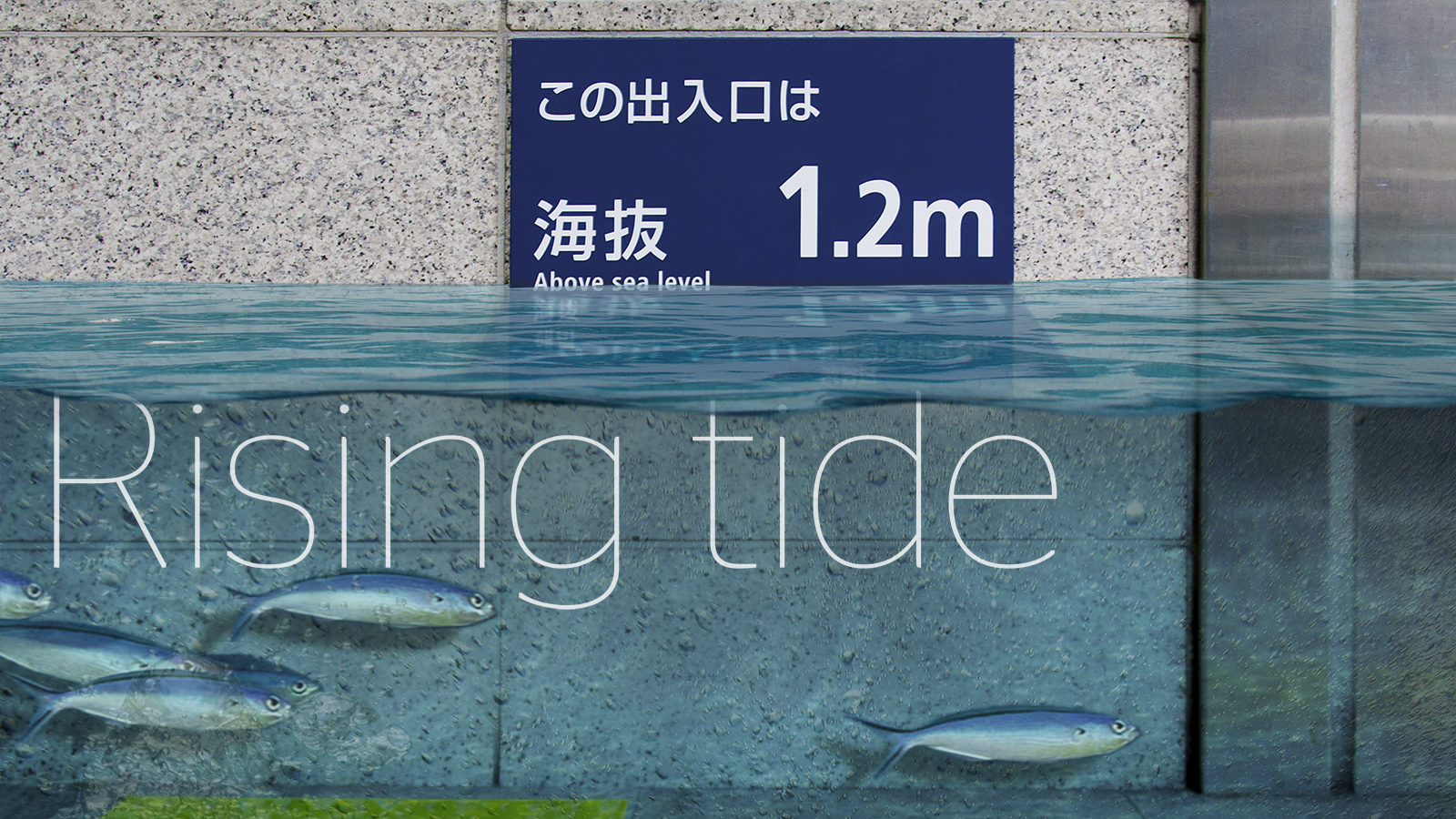
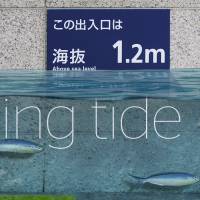
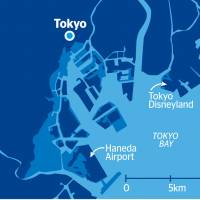
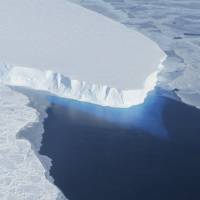
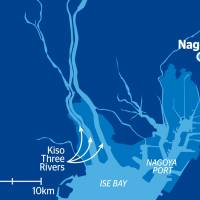
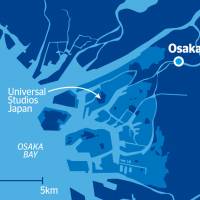















With your current subscription plan you can comment on stories. However, before writing your first comment, please create a display name in the Profile section of your subscriber account page.